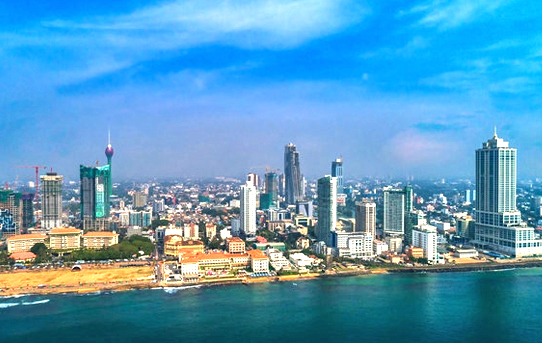
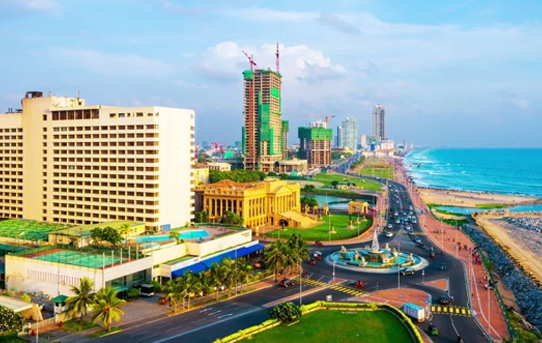
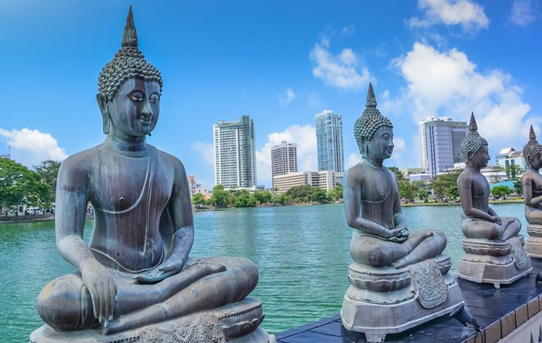

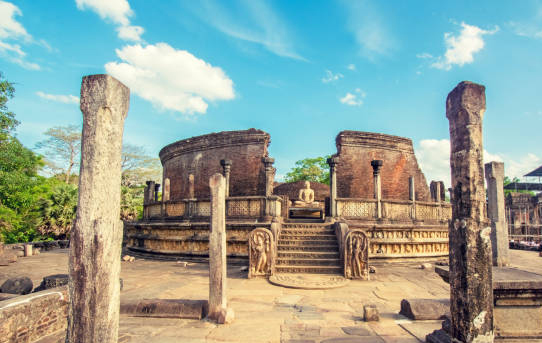
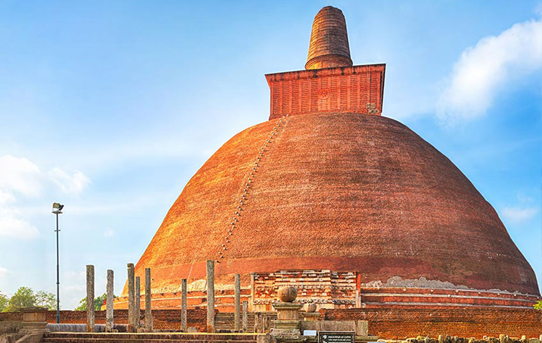
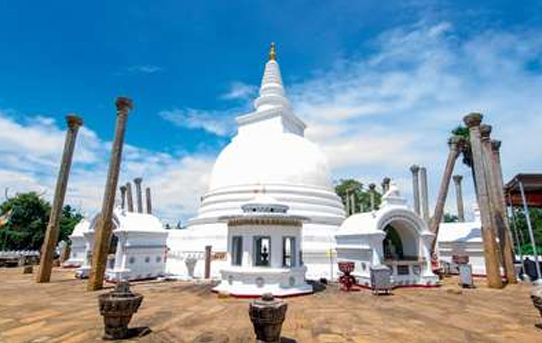
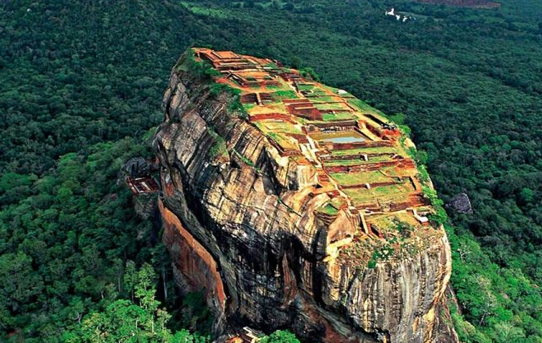
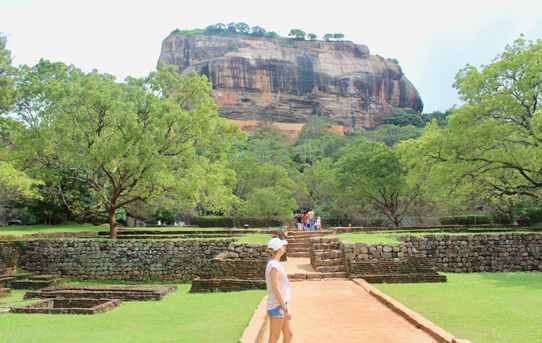
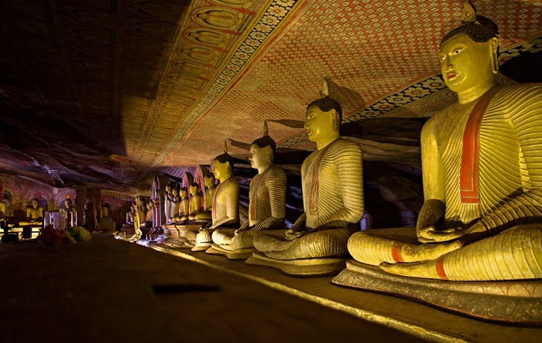
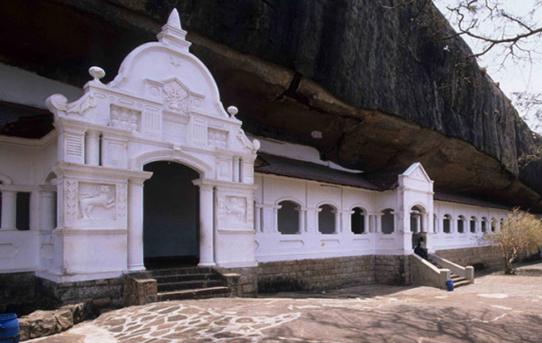
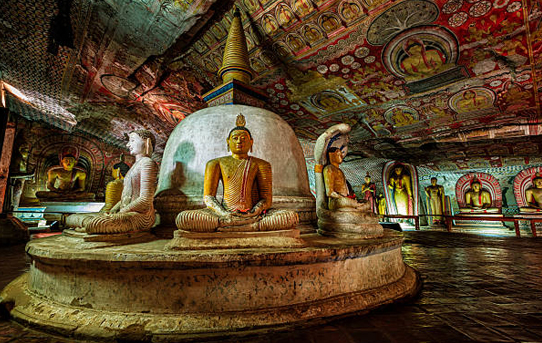
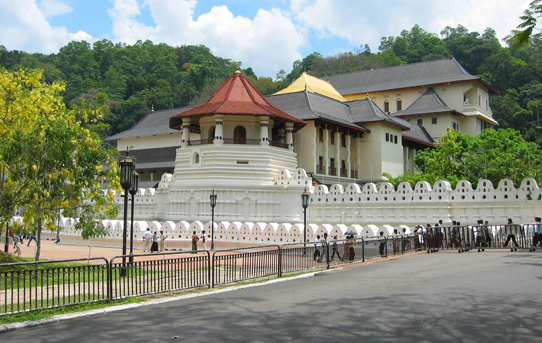
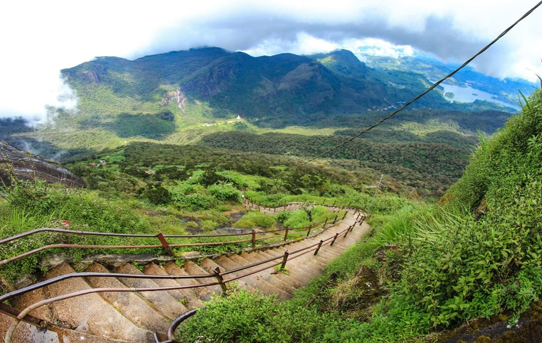

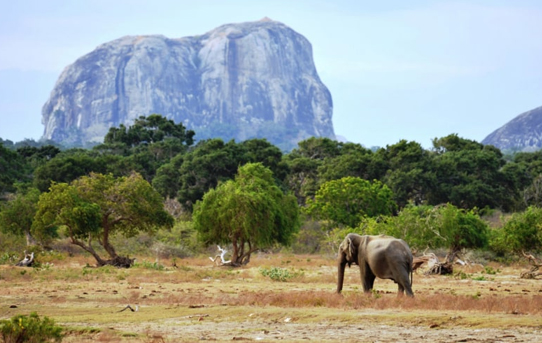
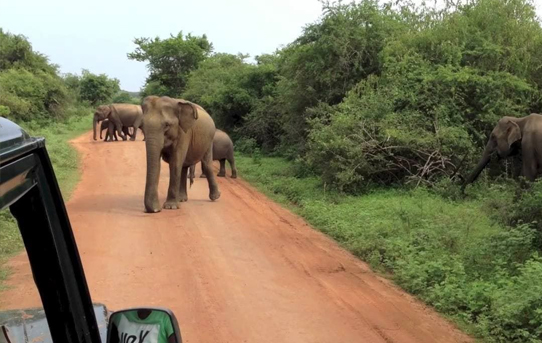
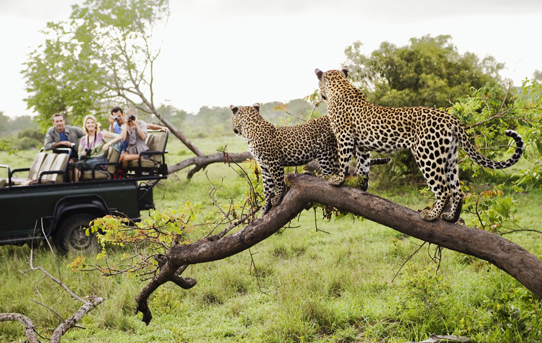
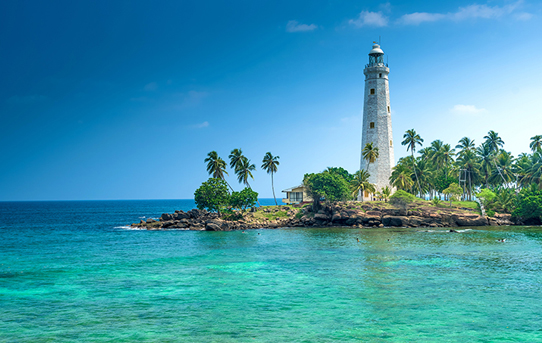
We offer you a 12 days tour of Sri Lanka that will take you through the major tourist destinations like Colombo, Anuradhapura, Polonnaruwa, Sigiriya, Dambulla, Kandy, Nuwara Eliya, Yala, Galle and others. You will have an amazing vacation through this tailor-made Sri Lanka tour.
This customized Sri Lanka tour will include visit to World Heritage Sites like Sigiriya, Polonnaruwa, Kandy and many other tourist destinations providing you opportunities to visit the former British administrative centre, Sea Street, the Dutch Church of Wolfendhaal, Kelaniya Buddhist Temple, Davatagaha Mosque, the Natural History Museum and Colombo Museum.
This tour of Sri Lanka will take you to the large stupas like Rankoth Vehera and Kirivehera, a rock shrine known as Gal Vihare that has four Buddha statues. The Royal Palace, Audience Hall, Sigiriya Fortress are some of the sites to be visited during this tour. Also see the replica of Avukana Buddha and the Independence Memorial in Sigiriya.
Visit to Dambulla cave temple and a Spice garden in Kandy, batik factory in Matale, Elephant orphanage at Pinnawala, Temple of the tooth relic and the Botanical garden in Peradeniya. Besides, “Ulpenge”- the Bathing Pavilion located along side the lake and an island known as "Kiri samudraya," located at the center of the lake will be the highlights of Kandy, included in the tour. Visitors can enjoy Dance and Music performances there as it has become a center of Buddhist culture, Arts & Crafts, Dance and Music.
You can visit the ‘Little England' of Sri Lanka called Nuwara Eliya, adorned with beautiful surroundings of valleys, mountains, waterfalls and tea plantations along with this, take a stroll of the Victoria Park and enjoy bird watching. Visiting the Ella rock will also be there on the cards, which is popular throughout the world for Ravana’s cave.
We ensure you a memorable Sri Lanka tour of 12 days with the best possible sightseeing of this beautiful island country.
On your arrival you will be met and transferred to Sigiriya. On arrival check in at the hotel; Dinner and overnight stay at Hotel Sigiriya - Sigiriyabr
After breakfast leave for Kandy. This afternoon you will have a city tour of Colombo.
Colombo is the business and commercial centre and the new capital is Sri Jayawardhanapura Kotte, only a few miles away. Colombo was only a small seaport, which came into prominence in the 16th Century with the arrival of the Portuguese in 1505 and the development of it as a major Harbour took place during the British period. Colombo became the capital of Sri Lanka in 1815 after Kandyan Kingdom was ceded to the British. The remains of the buildings during the period of the Portuguese, Dutch and British rule are found in every area of the city. None of the Portuguese & Dutch fortifications are found today but some of their buildings and churches could be seen in the Fort & Pettah areas. You will visit Fort, the former British administrative centre and military garrison, Sea Street - the Goldsmith's quarters in the heart of Pettah, the Bazaar area where there is also a Hindu Temple with elaborate stone carvings, the Kayman's Gate with the Belfry at the original gate to enter the Fort, the Dutch Church of Wolfendhaal dating back to 1749, Kelaniya Buddhist Temple dating to 6th C.B.C., Davatagaha Mosque, Colombo Museum and the Natural History Museum are some of the sites to be visited. Also visit the BMICH (Bandaranaike Memorial International Conference Hall), see the replica of Avukana Buddha in front and the Independence Memorial.
Dinner and overnight stay at Galadari Hotel - Colombo
After breakfast leave for Polonnaruwa and explore the 2 capitals of ancient Sri Lanka. After this you will be transferred to Sigiriya.
Polonnaruwa is another "World Heritage Site" and was the Capital of Sri Lanka from 11th - 13th Centuries, it contains some splendid and spectacular statues. Lankatilake, Tivanka and Thuparama are the most beautiful and largest Image Houses and Tivanka has the best examples of frescoes of the Polonnaruwa period. Rankoth Vehera and Kirivehera are well preserved large stupas, and Gal Vihare - a rock shrine, has four Buddha statues, two seated, one standing and one reclining and Parakrama Bahu statue are examples of Sinhalese stone carver. The Vata-da-ge is a unique creation of the Sri Lankan artists. The medieval capital, Polonnaruwa was fortified with inner & outer moats and inner & outer walls. The Parakrama Samudra is on the western side of the city. The Royal Palace, Audience Hall and other buildings in the inner city were enclosed by another tall wall.
Dinner and overnight stay at Hotel Sigiriya - Sigiriya
After breakfast climb the Sigiriya fortress, leisure in the evening
Sigiriya is a "World Heritage Site" and the 5th Century "Fortress in the Sky" which is perhaps the most fantastic single wonder of the Island. It is also known as Lion Rock because of the huge lion that used to stand at the entrance to the Palace on the summit of the 600-foot high rock. On its summit are the foundations of the Royal Palace, Water Tanks to supply water and all other buildings and at the edges the guardhouses. On one of the stairways the only known ancient work of Sinhala secular painting survived in the form of Frescoes of 21 life sized damsels still shining in their original colours. The Water Gardens, Fountain Garden, Summerhouses, Boulder Gardens and the Caves within the enclosed area should not be missed
Dinner and overnight stay at Hotel Sigiriya - Sigiriya
After breakfast leave for Kandy visiting Dambulla cave temple and a Spice garden en route. You will also visit a batik factory in Matale.
Dambulla Cave Temples is a vast isolated rock mass 500 feet high and a mile around the base. Here you will find the famous Rock Temple dating to the First Century B.C. The caves of Dambulla sheltered King Walagamba during his 14 years of exile from Anuradhapura. When he regained the throne he built the most magnificent of Rock Temples to be found in the Island. In the first Cave is a recumbent image of the Buddha 47ft long cut out of the Rock. There are images of deities associated with Buddhism all around. The frescoes on the walls and the ceiling are the oldest here but they are over painted in the Kandy period. In the Second Cave, the finest and the largest of all, there are 150 life-size statues of the Buddha in various postures with few statues of Gods and Kings. The ceiling is also covered with frescoes, which depict great events in the life of the Buddha and landmarks in the history of the Sinhalese people.
Spice Gardens at Matale - You will see many spice gardens at Matale and in Mawanella on the Colombo-Kandy road where Cinnamon, Cardamom, Pepper Creepers and all other spice trees, plants and creepers are planted for visitors to see them. Spice products are also available for those who would like to buy them. At all Spice Gardens visitors are taken around and shown each tree and plant and at the end an explanation is given for the use of them in food preparations.Afterwards visit a Batik Factory where you can see the manufacture of beautiful Batik prints. These shops contain a wide variety of Batik items.
Dinner and overnight stay at Amaya Hills - Kandy
After breakfast you will be taken to visit the Elephant orphanage at Pinnawela. After this you will be transferred back to Kandy for a tour of the city including a visit to the Temple of the tooth relic and the Botanical garden in Peradeniya.
Pinnawela Elephant Orphanage was started in 1975 to house the abandoned and wounded elephants. The number of elephants has increased to more than 89 now; including Baby Elephants brought from various parts, as well as some of the more then 49 babies born, as a result of the captive breeding program. The Best Time to Visit is the feeding time from 0930-1000 hrs and 1330-1400 hrs and the bathing time from 1000-1030 hrs and 1400-1430 hrs when all the elephants are taken to the river close by.
Kandy - the hill capital is another "World Heritage Site". It was the last stronghold of the Sinhalese Kings during the Portuguese, Dutch and British rule and finally ceded to the British in 1815 after an agreement. To the Buddhists of Sri Lanka and the World, Kandy is one of the most sacred sites as it is the home of the "Dalada Maligawa" - Temple of the Sacred Tooth Relic of Lord Buddha. Close by are the remains of the Royal Palace ("Maha Wasala"), "Palle Wasala"- where the Queens stayed-now used for the National Museum, "Meda Wasala" where other close relatives lived, Audience Hall, Natha Devala and Vishnu Devala are situated close by. The Bathing Pavilion ("Ulpenge") is by the Lake and in the Centre of the lake is the Island called "Kiri samudraya" (Milk white ocean) used by the kings as the summerhouse. Today it is the centre of Buddhism, Arts, Crafts, Dancing, Music and Culture. Visitors can see Dance & Music at the daily Cultural Performances held at several places in the city.
Royal Botanical Gardens - 147 acres in extent; Started in 1374 as a pleasure garden of the Kings of Gampola and Kandy. There are more than 4,000 species of trees, plants and creepers. Some rare and endemic as well as flora from the tropical world are found in the gardens. Spice Garden and Orchid House are popular with tourists. There are 5 Palm Avenues beautifying the gardens, the earliest and tallest Palm Avenue (Royal Palm Avenue) was planted in 1905 and the Double Coconuts from the Seashells Island, with the largest seed of all plants in the world is one such avenue.
Dinner and overnight stay at Amaya Hills - Kandy
After breakfast leave for Nuwara Eliya visiting a Tea factory and Plantation. The rest of the day is at leisure.
Tea was first planted in Sri Lanka in 1824 at the Botanical Gardens at Peradeniya, when a few plants were brought from China. More were introduced from Assam in 1839. In 1867, a Scottish Planter named James Taylor planted tea seedlings in 8 hectares of forestland, in the Loolkondura Estate. In 1873, the tea export industry of Sri Lanka began with a modest 23 lbs. being shipped to London. Tea will grow only on rolling terrain and is classified by elevation into low grown, medium grown and high grown into 3 main groups. Today more than 200,000 hectares in highlands and other areas are under Tea and around 300 million Kilograms, with 25% of world tea exports are done by Sri Lanka as the World's largest Tea exporter.
Nuwara Eliya - The ‘Little England' of Sri Lanka, is set against beautiful backdrops of Mountains, Valleys, Waterfalls and Tea Plantations. It is supposed to be one of the coolest places on the Island, but it is really just like an English spring day, although the temperature does drop at night. All around Nuwara Eliya you will see evidence of the British influence, houses like country cottages or Queen Ann style mansions. The Victoria Park, in the middle of the town, is a lovely place for a stroll or a picnic and is also good for Birding as you get some rare birds in this Park. Seasons may be absent elsewhere in Sri Lanka, but here you can read them by the flowers, which bloom in the spring (march to May) and the fall (August and September). These are the "seasons" when low-country folk flock to Nuwara Eliya to escape the sea level heat and humidity.
Dinner and overnight stay at Grand Hotel - Nuwara Eliya
After breakfast you have a full day at leisure or you might like to take an OPTIONAL Excursion to Horton Plains
Horton Plains National Park - 32 km from Nuwara Eliya via Ambewela and Pattipola, is the Horton Plains only 3160 hectares in extent. Known to Sri Lankans as Mahaeliya, it became Horton Plains after Sir Robert Horton, British Governor from 1831- 1837. Horton Plains became a Nature Reserve in 1969 and upgraded as a National Park in 1988 due to its unique watershed and bio-diversity values. Its flora has high level of endemism. The hills are covered with diverse wet low evergreen forest with even large trees grown flattened to the ground on the higher windswept slopes. Horton Plains harbours 52 species of resident birds and 11 species of migrant birds. More then 2,000 to 3,000 Sambhur, Bear Monkey, Leopard, Barking Deer, Giant Squirrel, Fishing Cat, Wild Boar and Hares roam in the forests and grasslands but only seldom they could be seen other than the Sambhur in the evening and morning. Two escarpments- "World's End" and "Little World's End" falling from the Horton Plains 1000 feet and 3000 feet respectively, to the land below and the Baker's Falls are places you should visit. This is the only National Park where visitors can walk on their own in the designated tracks.
Dinner and overnight stay at Grand Hotel - Nuwara Eliya
After breakfast you wil be transferred to Yala. En route you will visit Ella Wellawaya. Late in the afternoon you will be taken on a 4X4 Jeep safari into Yala national park. Ella is 127 miles from Colombo and 8 miles from Bandarawela, on the leeward side of the central mountains. The view from Ella Gap is one of the most spectacular scenic sights in Sri Lanka - the landscape falls away in a dizzy drop of 3000ft to the eastern plains. The Ella rock is famous for the cave of Ravana a legendary king of Sri Lanka ruled during the pre-historic times. The 1080-foot high waterfall few miles from the Ella Rest House is one of the most beautiful falls in the country.
Yala (Ruhuna) National Park covers 126,786 hectares including the Strict Natural Reserve (Block II). The most familiar is Block I (14,101 hectares) and this were established in 1938. Yala is famous for its big herds and large number of Elephants, Leopards, Spotted Deer, Sambhur, Crocodiles, Mongoose, Wild Boar, Wild Buffalo, and many other animals.More than 130 bird species are recorded which includes the resident and winter visitors.
Dinner and overnight stay at Chaaya Wild Hotel - Yala
After breakfast leave for Kataragama and visit the temple. After this continue to Galle and then Kalutara.
Kataragama - in the deep south of the country is a shrine dedicated to God Skanda (Murugan) the God of Love and War and is believed as a Devala started in the 2nd Century B.C. by King Dutugemunu (167 -137 B.C.). Today Kataragama is a place of worship for Buddhists, Hindus and some Muslims. This is a very popular place of pilgrimage for south Indian Hindus as Kataragama God came from India, married a Jungle Girl and lived here. When his Indian wife came in search of him he refused to go back. All of them lived here happily. There are separate shrines for the two wives Tevani Amman Kovil for the Indian wife and Valli Amman Kovil for the Sri Lankan wife. During the month of July a 10-day festival is held here with the Perahera, Fire walking, hanging on hooks and other penance's. The best time to be in the Devala is at the time of the Pooja (Offerings) to see the rituals and the Virgin Dancing girls offering light and dancing in the Devala.
Galle - Sri Lanka's most historically interesting town is Galle. It was a major port until about 100 years, but today still handles shipping and sailing boats in the natural harbour. Stroll around the lighthouse and harbour or visit the old town where you can see the traditional lace makers and wood carvers and purchase some the finest souvenirs. The oldest landmark in Galle is the massive Portuguese and Dutch Fort which is a "World Heritage Site" in which the central city is contained. But the city may be much older. Some scholars believe it to be the "Tarshish" of the Old Testament, to which King Solomon sent his merchant vessels, and to which Jonah fled from the Lord. Today, the 90-acre Galle Fort shows no evidence of the Portuguese founders. The Dutch incorporated the Portuguese northern wall in a great rampart in 1663. A second, taller wall was built inside of it. Between the two walls, a covered passage connected the central bastion with the Fort's two half bastions overlooking the sea. The Dutch also installed a sophisticated drainage system, complete with brick-lined underground sewers that were flushed twice a day by the high and low tides. The original gate to the fort was by the harbour. It is still there, marked by the British Coat-of-arms on the front and the Dutch V.O.C. (Vereenigde Oost Indische Compagnie) with the Coat-of-arms with a rooster crest, on the inner side of the Fort.
Dinner and overnight stay at Avani Kalutara - Kalutara
After breakfast you have a full day at leisure. Dinner and overnight stay at Avani Kalutara - Kalutara
After breakfast transfer to the airport for your exit flight